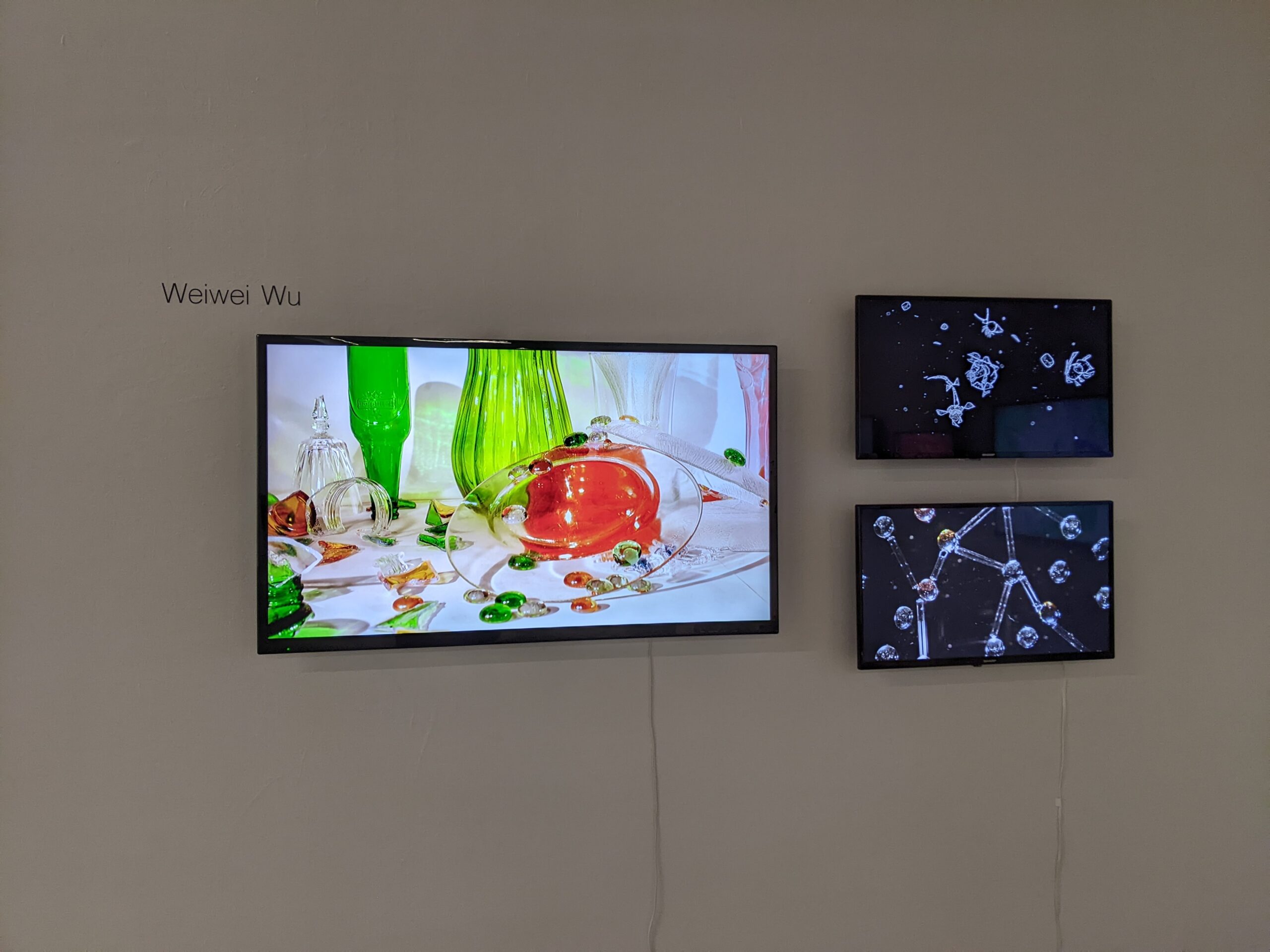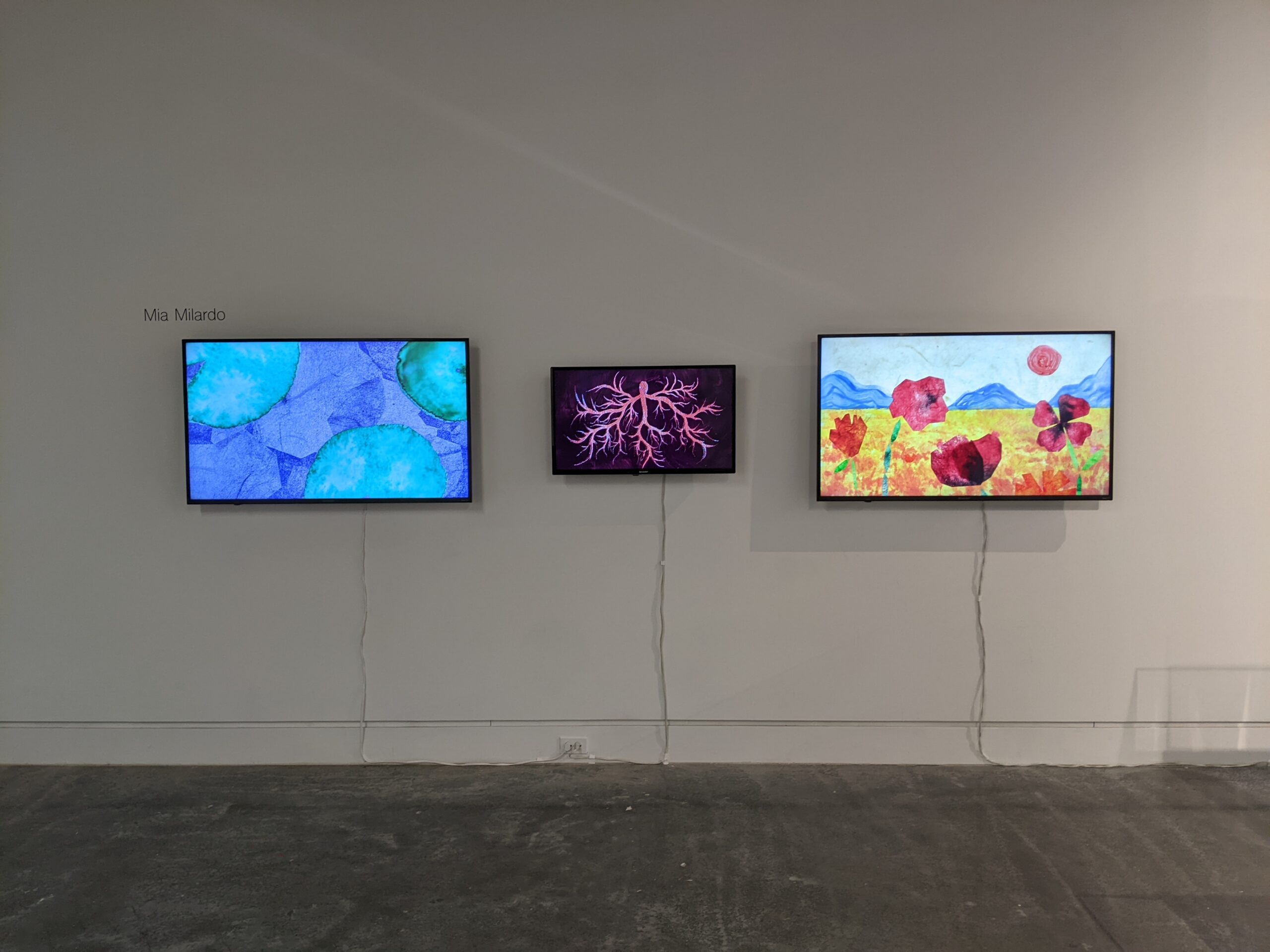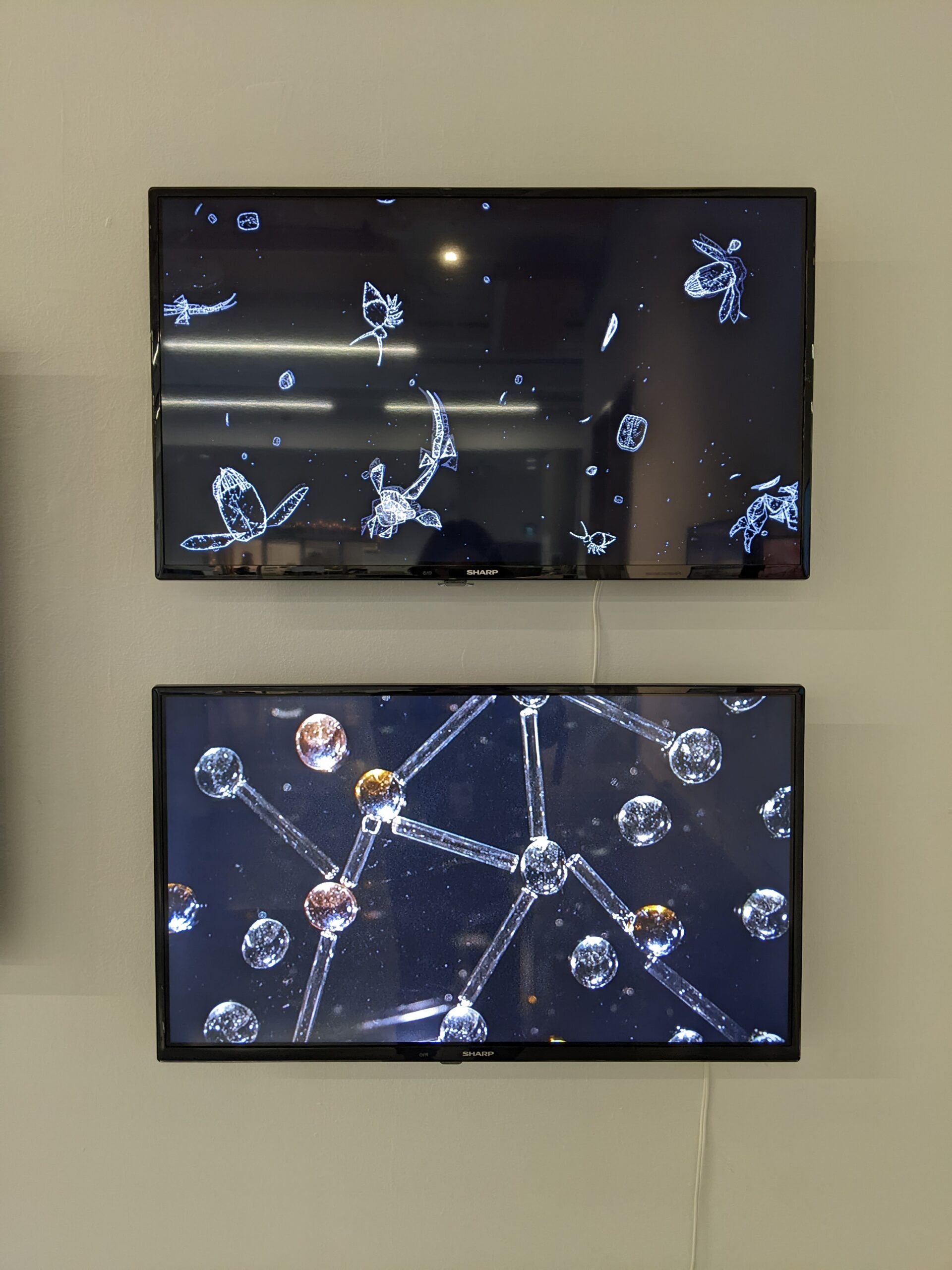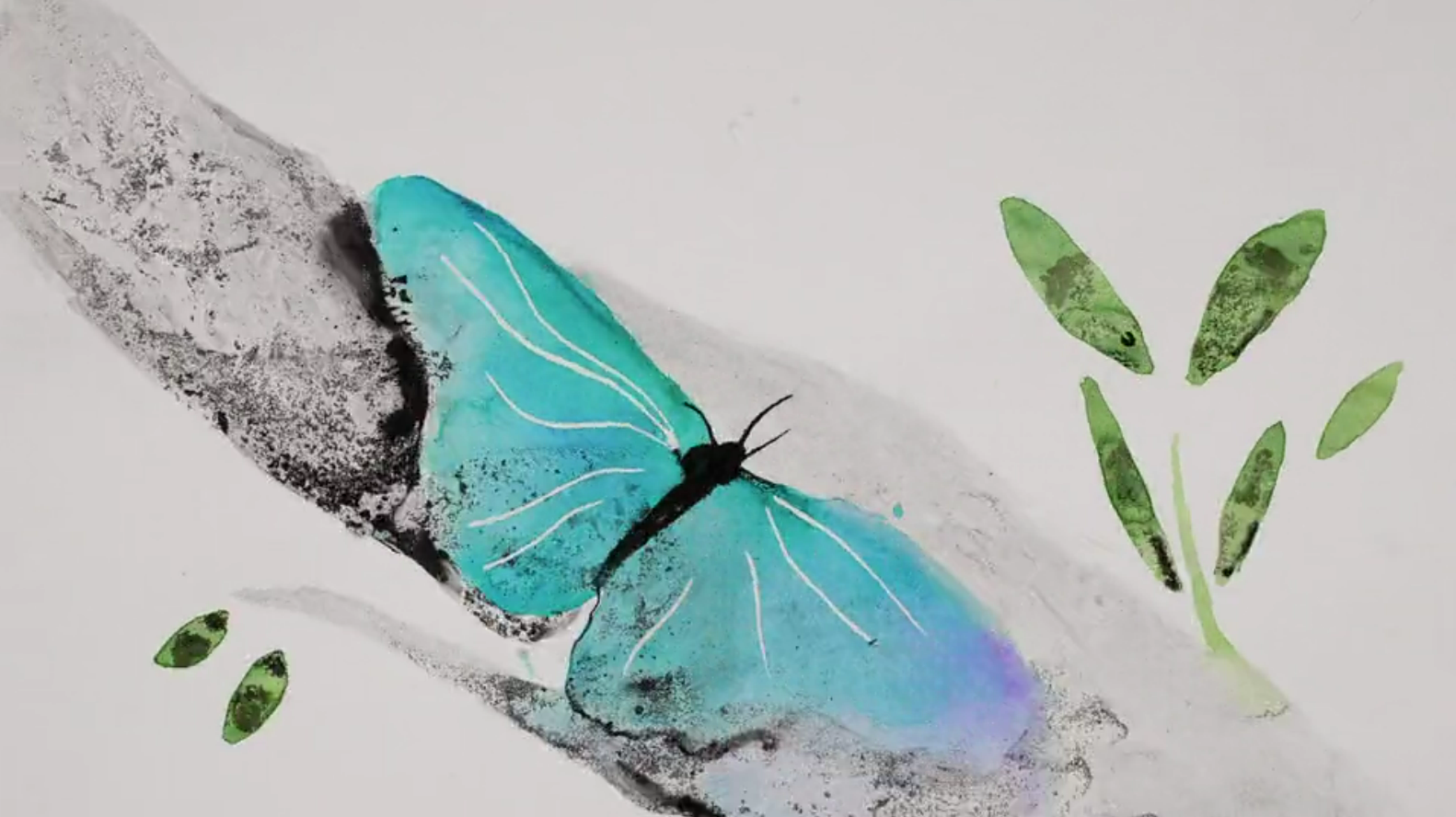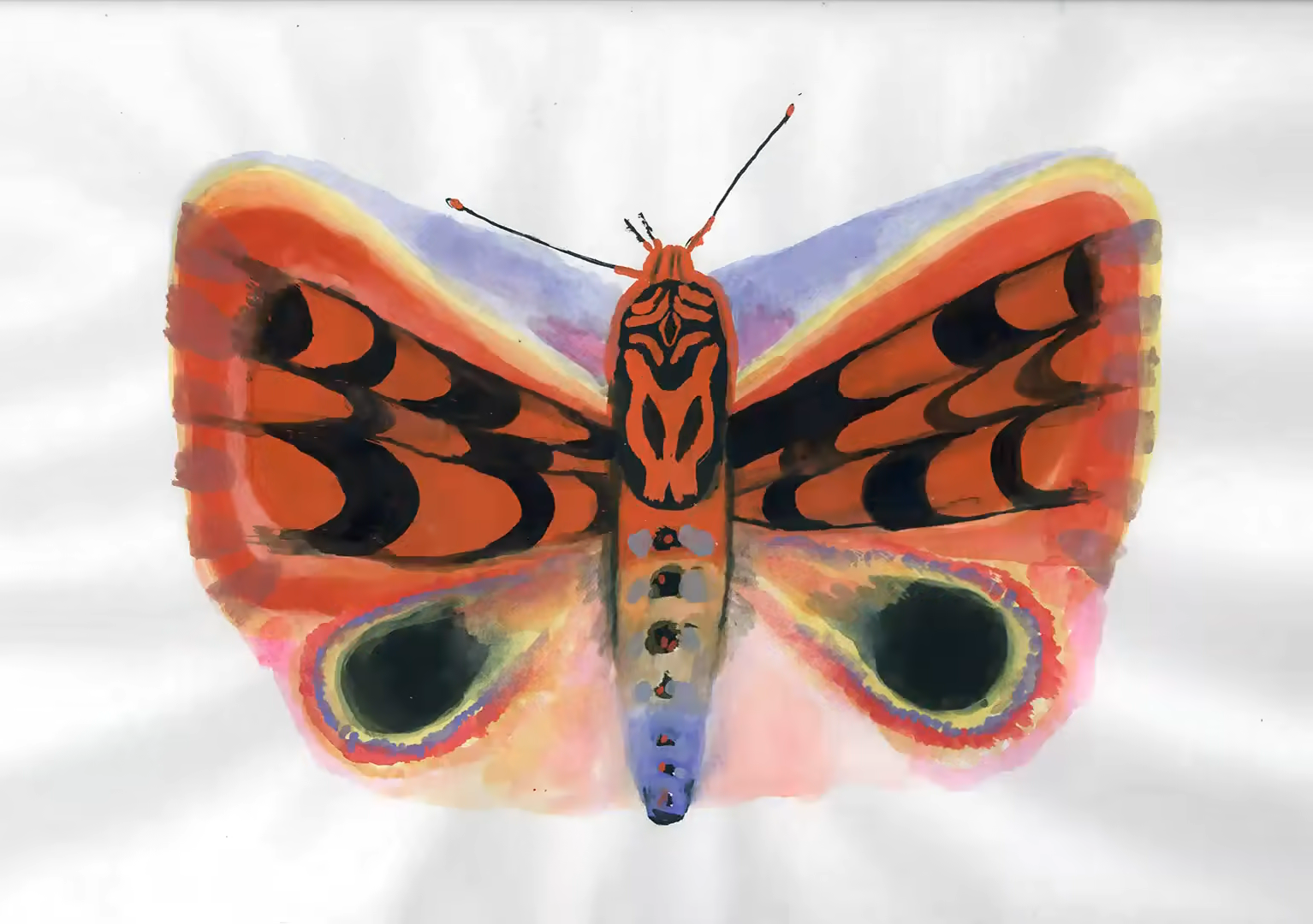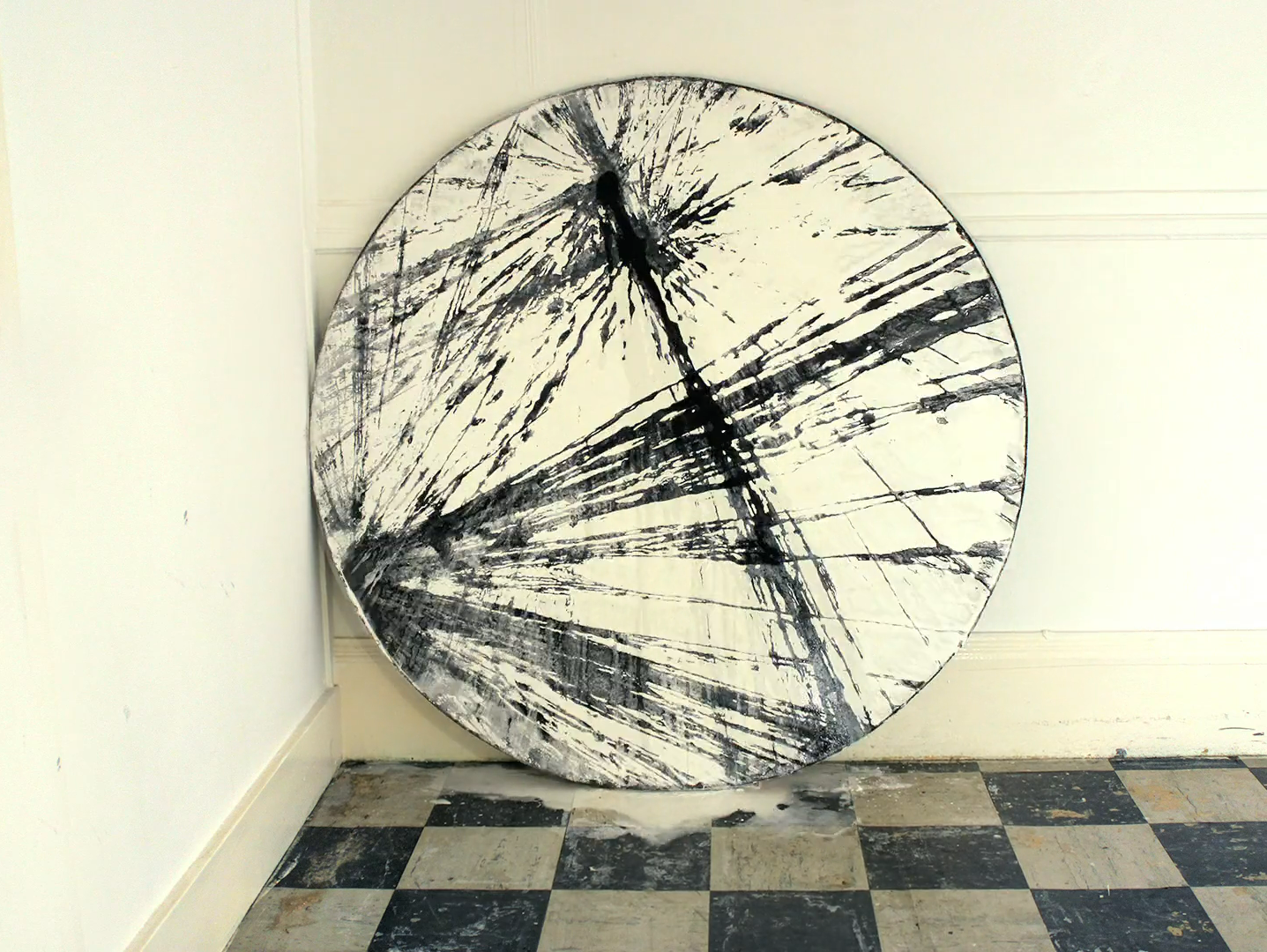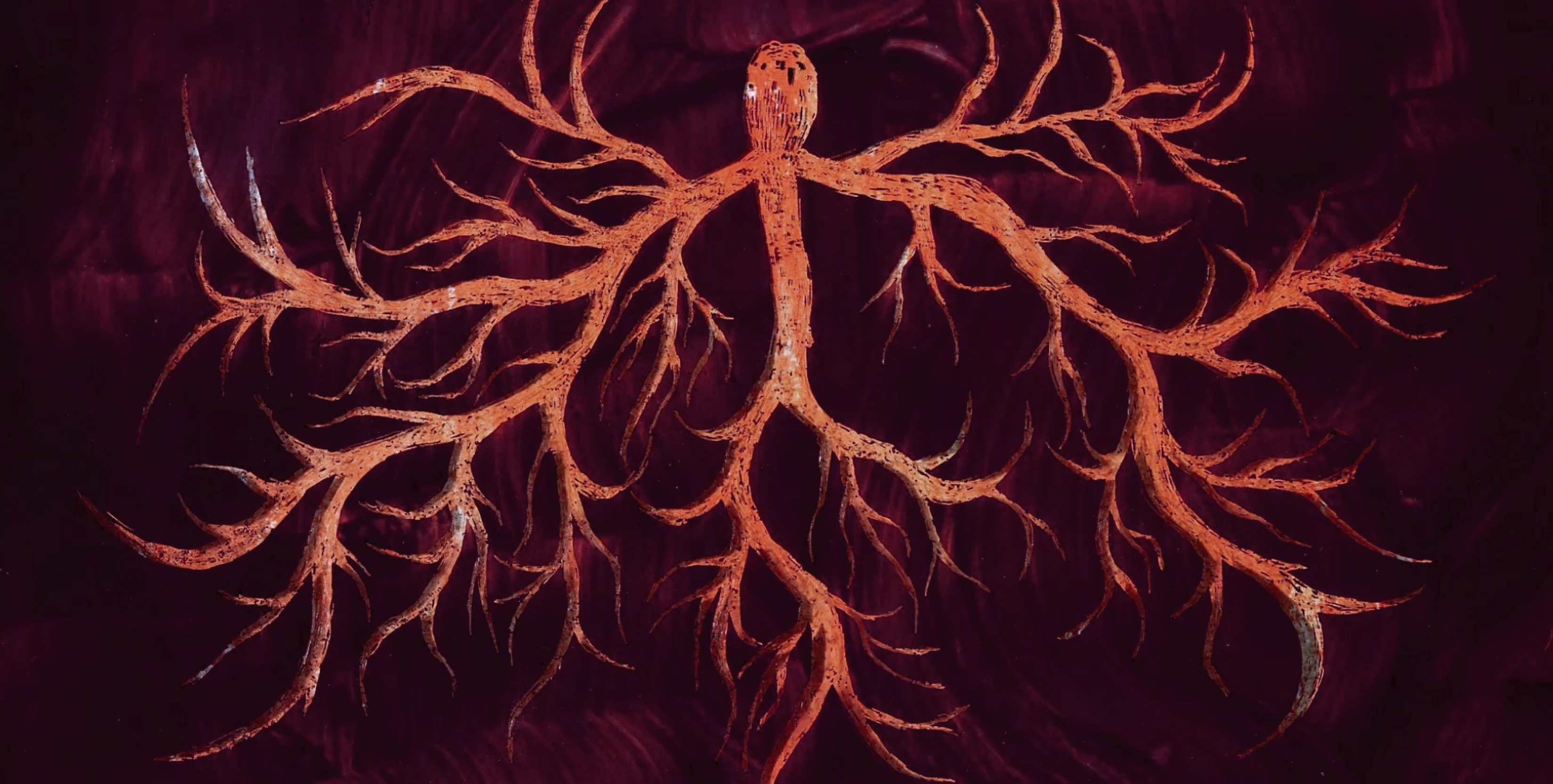
Exhibiting animation and its materials
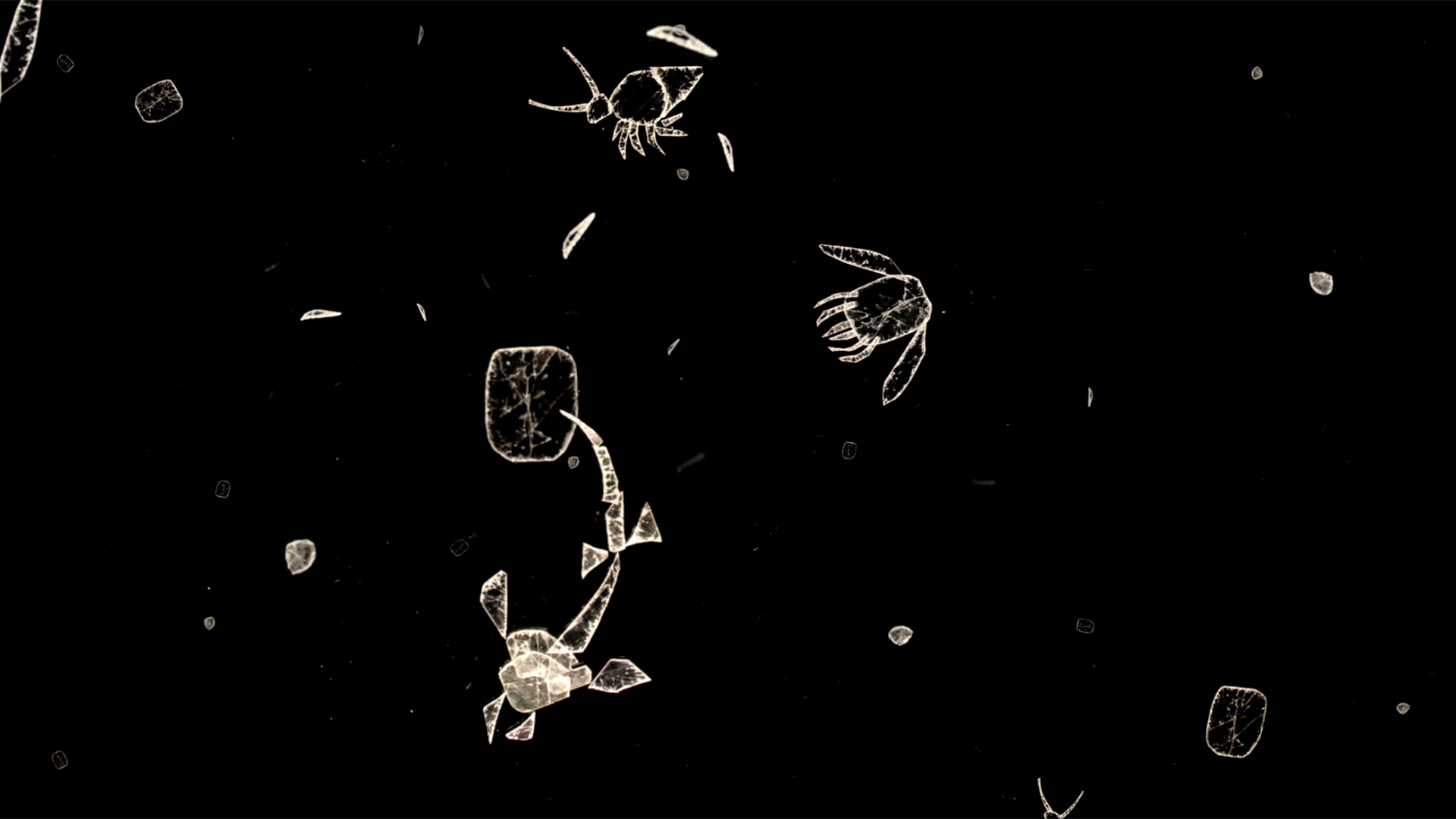
shards of glass cell phone protectors replicate microscopic creatures and microbes
Wu exploited the translucent qualities of glass in a stop-motion study of insect vision and particle movement. Reclaimed glass vessels, original flameworked sculpture, and puppets cut from tempered glass catch and redirect light in a playful series of interactions. Each successive composition altered the scale of magnification, shifting from an intimate study of a spider’s crawl to a dynamic portrait of microscopic organisms, and an entrancing game of molecular bonds. These shifting scales recall the vital contribution of glass to scientific optics and its role as a variable lens into macroscopic and microscopic realms.
Milardo explored gouache and watercolour as two related paints capable of modulating between solid and liquid states. In her triptych reflection on landscape painting, Milardo returns the pigments to their primary sources of mineral, plant, and water. As with Wu’s series, the perspectives shift, from a frontal mountainscape view to a floating glimpse of aquatic life and to an underground encounter with living soil. Working primarily with rice paper, Milardo’s gestures bring out the textured threads of cellulose and the breathing pulse of her brushstrokes.
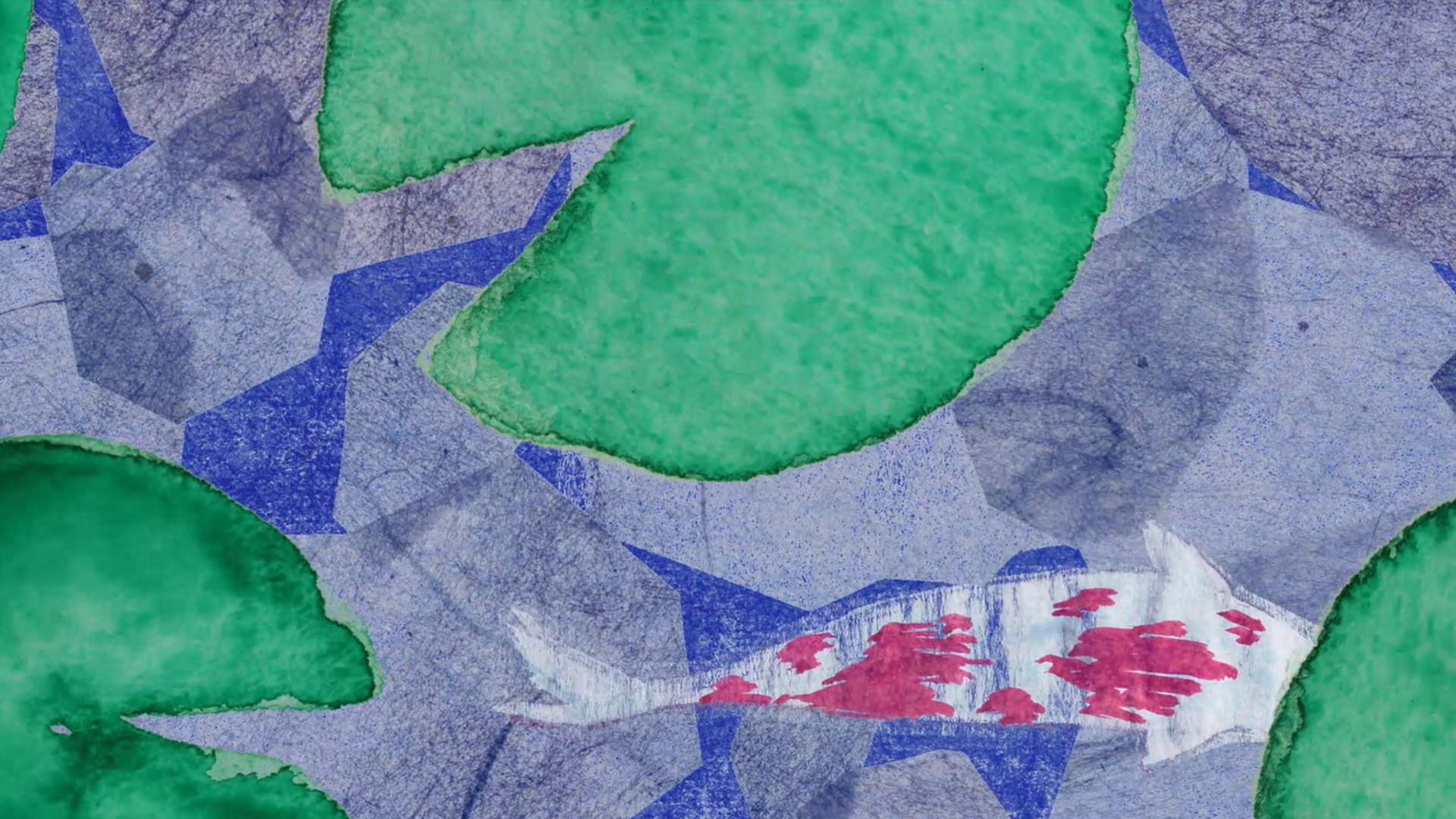
a composited scene of a gouache koi fish swimming through a pond, using rice paper
In addition to the looping works on screen, the exhibition featured a vitrine of objects and materials used in the making of each animated piece. Wu’s tempered glass puppets, flameworked glass spider puppet and found glassware occupied one side of the table. The other showed Milardo’s papers with small hand-painted animation frames, a light table illuminating the strokes of a painted and etched acetate cel, and the fine texture of colourful rice paper cutouts.
The display of these objects expressed the essential role of materials in animation and invited the viewer to consider the relationships between the materials, the artists, and the finished works on screen. The vitrine of artefacts put into context the various processes involved – Wu’s hand-crafted puppets and use of a macro lens to photograph magnified details and Milardo’s use of scale and exploitation of texture and light with the pigmented materials.
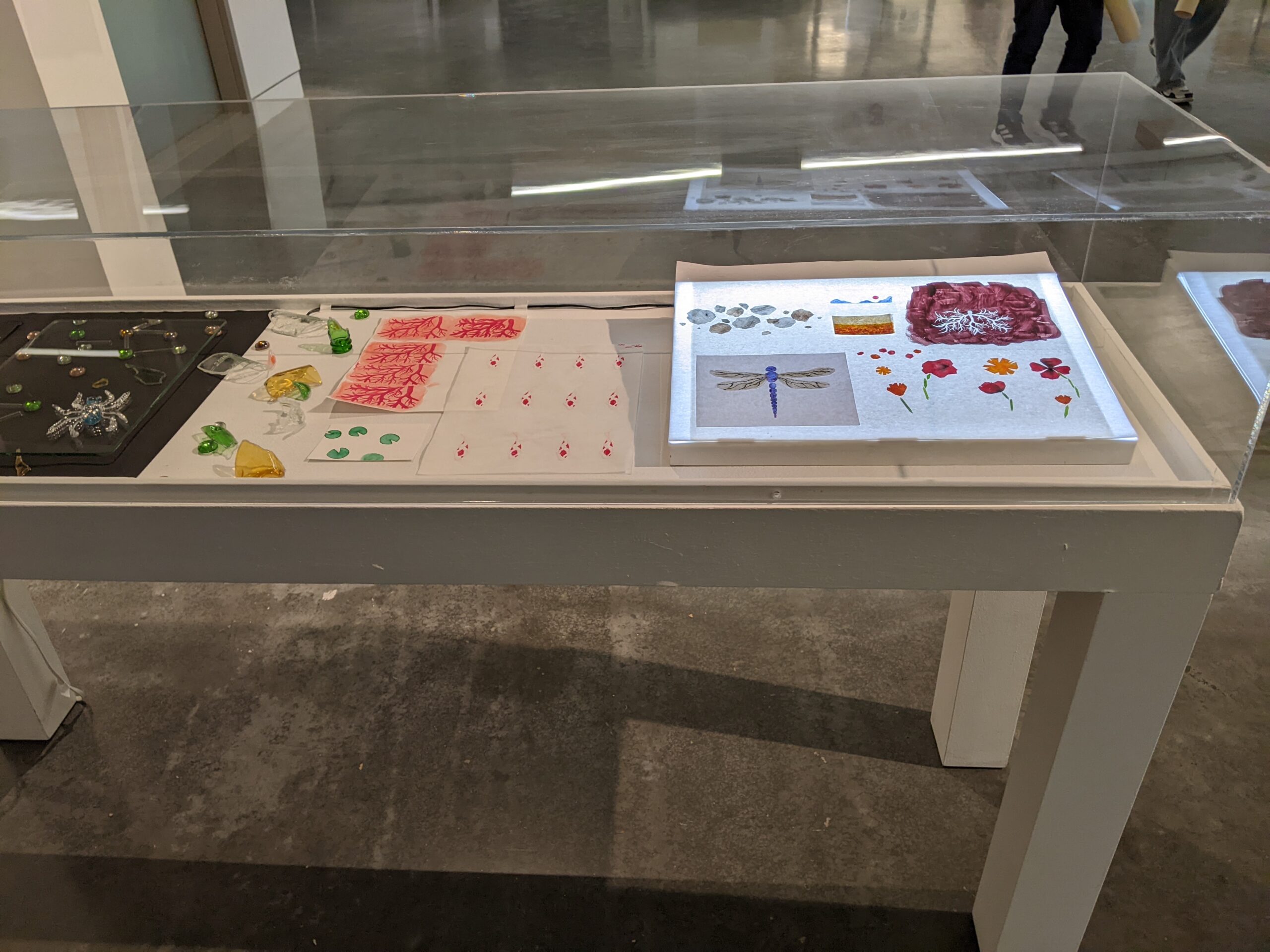
puppets and still from the triptychs on display
